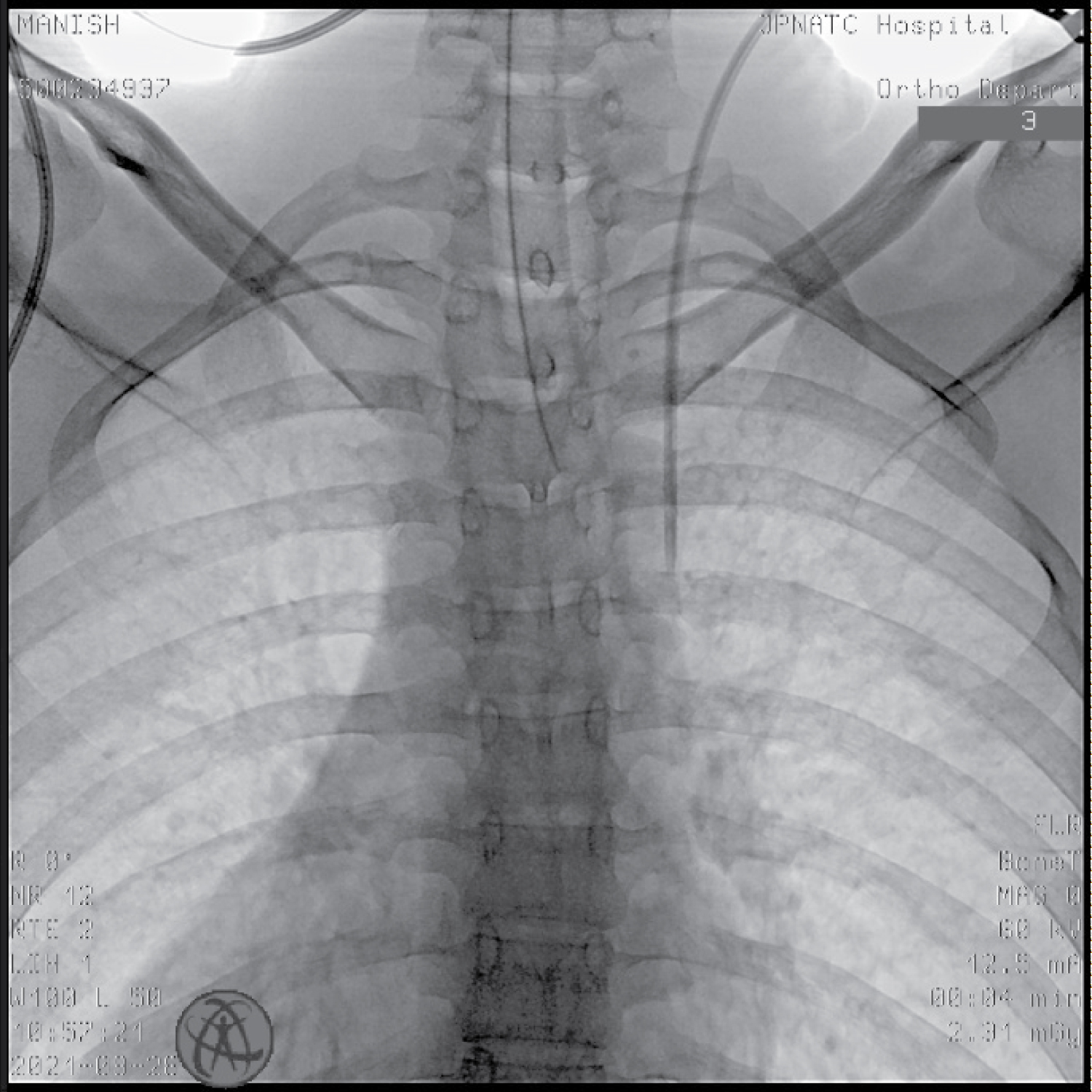Central venous catheters (CVC) are a vital part of an anaesthetist's armamentarium for resuscitation during intraoperative emergencies and they carry an inherent risk associated with tip malposition. Various sources recommend catheter tip position at the distant one-third of superior venecava (SVC) as ideal. Our principle concern is to place the tip above the pericardial reflection of SVC to avoid vascular erosion and consequent pericardial tamponade. There are multiple ways of ensuring that the catheter tip is in safe zone. Literature suggest mathematic estimation from patient's height, using intracavitary ECG, saline agitation, Tranesophageal ECHO and post-insertion chest X-ray to confirm CVC tip position. An often forgotten modality is the intraoperative fluoroscopy used by the surgeons in spinal surgeries (most of which require CVC insertion as well) for confirming implant position. We suggest an additional utility of those fluoroscopic devices.
A 21-year-old male patient of traumatic spine injury with past history of posterior instrumentation with implant in situ is planned for implant removal and interbody fusion. In view of anticipated major blood loss, CVC was placed in right internal jugular vein under ultrasound guidance. We confirmed Central venous catheter tip position by fluoroscopy readily available for surgical reasons (Figure 1).
Fluoroscopy provides immediate confirmation of central line position thereby enabling immediate central line repositioning so as to avoid arrhythmias which might occur due to further catheter tip migration with proning and obliviates the need for postoperative chest X-ray for the purpose of CVC tip confirmation. Fluoroscopy provides safe, effective and cheaper alternative for CVC tip confirmation using what is readily available in OR for spinal surgeries.

Figure 1: Catheter tip visualized after proning just at the level of carina.